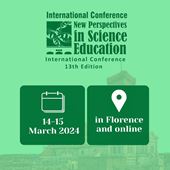The role of whitespace in science diagrams in schools
John Oversby, Science Education Futures (United Kingdom)
Penny Robotham, The national mathematics and science college, (United Kingdom)
David Marsh, St Mary\'s School (United Kingdom)
Abstract
The use of text in teaching science, in schools, is widespread, even extending to examinations where responses are frequently, expected in words. Diagrams are less commonly used, and even then, examination questions focus on labelling with words. The teacher-researcher group, PALAVA, has focused on representations and visualisation (see www.PALAVA.wikispaces.com) as the centre of its collaborative research.
Recently, we have been exploring the role of diagrams in learning science. We had investigated what observers noticed in diagrams (e.g. Topsakal & Oversby 2012 & 2013) when we discovered that designers had pointed out the role of whitespace in influencing what readers saw. Whitespace is the space that is supposed to be ignored. It can be any colour, and it may have an active role (e.g. red in danger signs, and green in safety signs). However, designers wrote in general terms (e.g. sufficient whitespace), so we chose to study the issue in detailed and specific terms. We asked:
- In scientific diagrams, how much whitespace is there and where is this located?
- How does the proportion of whitespace and location influence what readers notice?
Our target audience in this pilot phase has been some of the PALAVA group members (teachers), and some post-16 students, and we wish to report some results on research question 1 at this stage. We measured the whitespace using the area of triangles and rectangles drawn on the diagram, and alternatively, by weighing cut-out areas of whitespace on a microbalance. Our results agree quite closely, within 5 – 8%. We have also found modest differences of opinion on what constitutes whitespace. The location of the whitespace is characterised using a relatively fine-meshed grid.
We have also discovered that some diagrams (especially in Education for Sustainability) that appear to be very busy, are not so full, with content occupying around 50% only.
At this early stage, we have found that carrying out this research has sensitised the researchers to the existence of whitespace, and its value in scientific explanatory diagrams used in schools.
References
2012 Umdu Topsakal, Ü., Oversby, J., Turkish Student Teachers’ Ideas About Diagrams of a Flower and a Plant Cell, Journal of Biological Education, Vol. 46, Issue 2, pp. 81-92,
2013 Umdu Topsakal, Ü., Oversby, J., What do scientist and non-scientist teachers notice about biology diagrams?, Journal of Biological Education, Vol. 47, Issue 1, pp. 21-28
 New Perspectives in Science Education
New Perspectives in Science Education


























